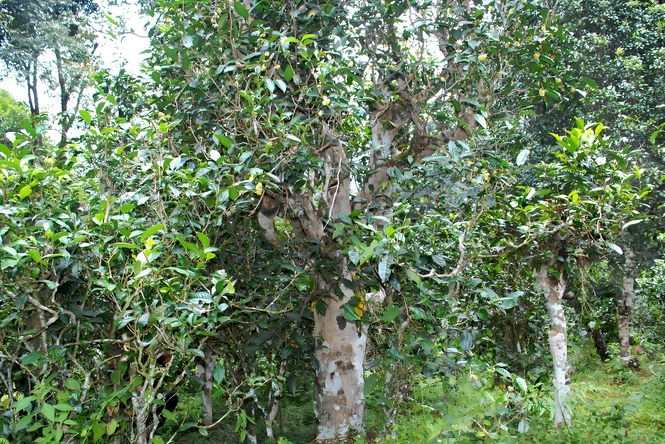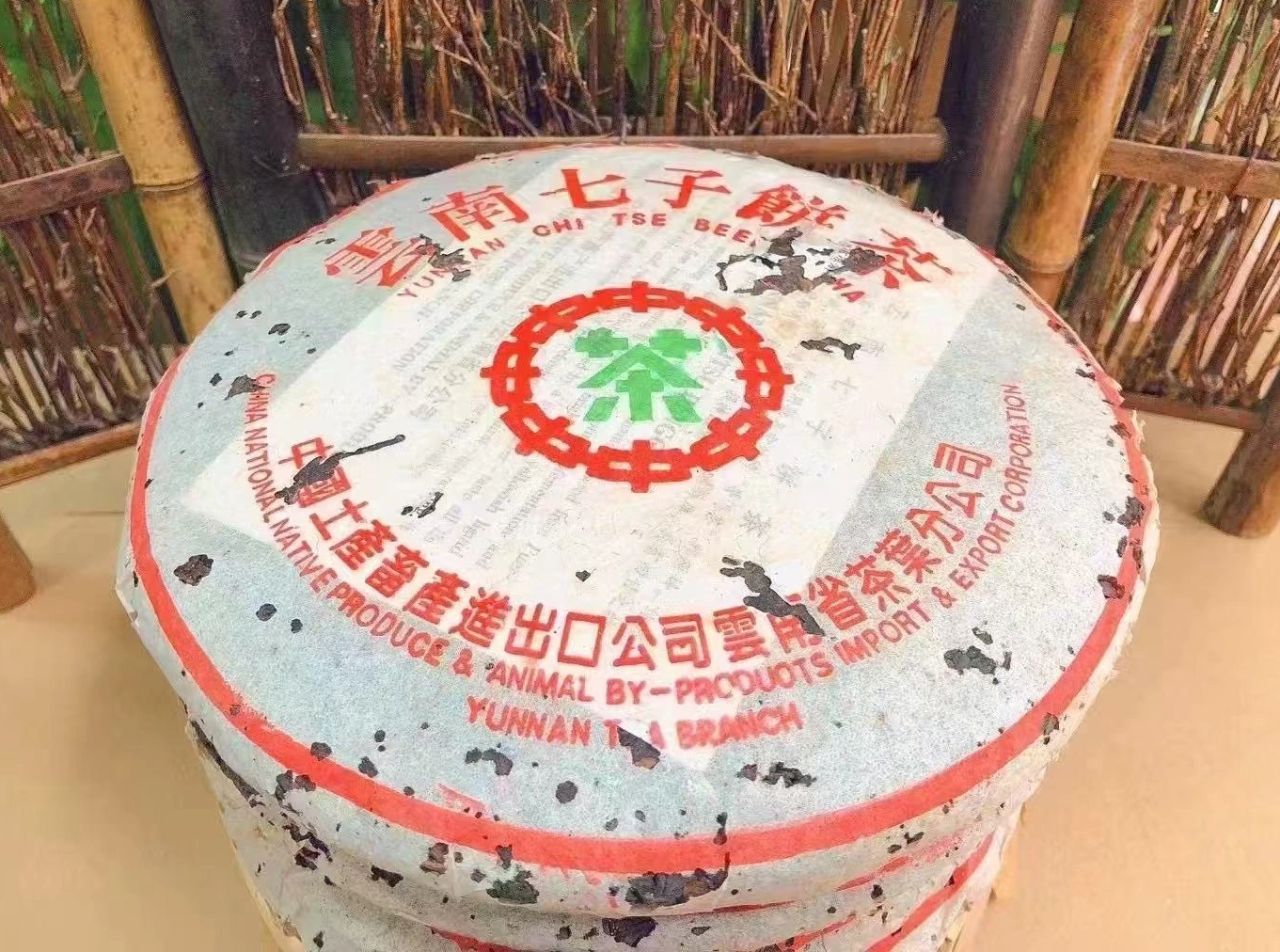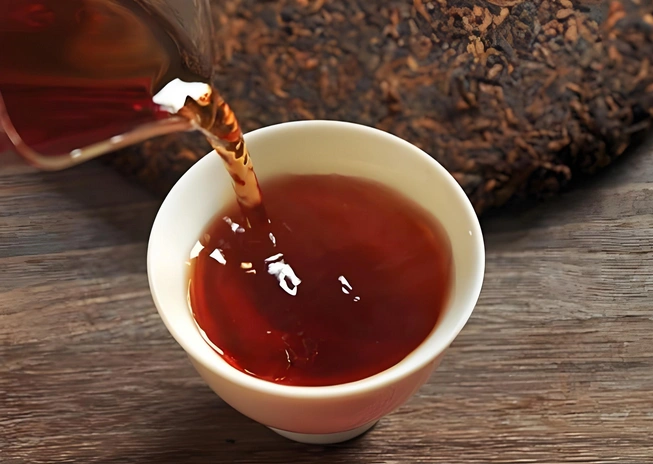Pu Erh tea and metabolism go hand in hand, offering a sensorial journey that awakens your internal fire. Imagine holding a warm cup of deep amber tea, its aroma a heady blend of damp forest floor and aged oakwood. As the steam rises in gentle curls, you feel a subtle energy stirring within—a promise of enlivened digestion, revved-up fat burn, and a revitalized sense of youth. In a world filled with quick fixes and fleeting trends, Pu Erh stands apart as a time-honored elixir, meticulously fermented to perfection in Yunnan’s misty mountains. This ancient tea doesn’t just soothe your soul; it kindles your body’s furnace, transforming every sip into a thermogenic spark.
In this article, we explore Pu Erh tea and metabolism from every angle—its microbial alchemy, its role in a weight loss diet, its symphony with gut health, and even its ties to anti-aging. We’ll weave through sensory delights and scientific insights, showing you how to brew each cup for maximum metabolic benefits. Whether you seek a gentle morning boost, an afternoon digestive ally, or a nightly ritual to preserve youthful vigor, Pu Erh promises a path to holistic vitality.

How Pu Erh Tea Affects Metabolism Naturally
Unique Fermentation and Metabolic Impact
At the heart of Pu Erh tea and metabolism lies its extraordinary fermentation process. Freshly harvested tea leaves—often from century-old Camellia sinensis trees—undergo a meticulous transformation. In the “Shou” (ripe) Pu Erh method, leaves are piled and moistened in a warm, humid environment, encouraging microorganisms to break down polyphenols into complex theabrownins and thearubigins. This microbial alchemy, which can last several weeks, creates a tea that is both earthy and mellow, with a subtle hint of dried wood and cocoa.
These fermented compounds do more than delight the palate. Theabrownins and thearubigins modulate lipid metabolism by influencing enzymes involved in fat breakdown. Studies suggest these molecules can inhibit pancreatic lipase—a key enzyme that digests dietary fats—thereby reducing fat absorption. Simultaneously, Pu Erh’s polyphenols stimulate thermogenesis, the body’s heat production process, gently raising your resting energy expenditure. This dynamic interplay of fermentation-derived metabolites and polyphenols makes Pu Erh tea and metabolism a powerful combination for anyone looking to stoke their internal furnace without harsh stimulants.
Polyphenols, Thermogenesis, and Energy Expenditure
The notion of “teatime as a metabolic workout” may seem poetic, yet the polyphenol profile in Pu Erh offers tangible results. Catechins and gallic acid in raw (Sheng) Pu Erh break down during aging into theabrownins—compounds that research shows can activate AMP-activated protein kinase (AMPK), the body’s cellular energy regulator. When AMPK is stimulated, cells ramp up glucose uptake and fatty acid oxidation, effectively training your metabolism to become more efficient.
Imagine sipping a cup of Pu Erh on a crisp morning. Each swallow is like placing fuel on a smoldering ember—your core temperature rises slightly, your blood flow increases, and your cells begin to utilize stored fat. This gentle thermogenic effect doesn’t produce the jitters of high-dose caffeine; instead, it produces a sustained, glowing warmth that lasts for hours. The result? A body primed to burn calories more effectively, even during rest. By embracing Pu Erh tea and metabolism, you tap into a natural booster that works in harmony with your physiology.
Pu Erh Tea for Weight Loss Diet
Integrating Pu Erh Tea and Metabolism into Meal Plans
When crafting a Pu Erh tea for weight loss diet, timing and synergy are everything. Begin your day with a 2–3 minute steep of raw Pu Erh. Its slightly brisk, earthy flavor awakens your senses and mobilizes your metabolic pathways. By mid-morning, consider a small 200–240 ml infusion of ripe (Shou) Pu Erh—its smooth, mellow taste calms any sweet cravings and supports steady blood sugar levels.
For lunch, pair a balanced meal—lean protein, leafy greens, and whole grains—with a 3-minute Pu Erh infusion. This helps reduce post-meal fat absorption and encourages a more gradual release of energy, preventing the tired slump that often leads to snacking. As the afternoon wanes, a short 1-minute rinse followed by a 2-minute infusion of Pu Erh serves as a gentle appetite suppressant, nudging you away from vending machine temptations.
Crucially, Pu Erh tea for weight loss diet thrives when combined with mindful eating. Focus on whole foods rich in fiber and protein, and hydrate with Pu Erh between meals. Its thermogenic lift and lipid-modulating effects compound the benefits of a calorie-conscious plan, making it far easier to shed excess pounds without feeling deprived.
Comparing Pu Erh and Oolong Tea for Weight Management
Oolong tea, with its partial oxidation, vanishes calories swiftly. Its floral or honeyed notes captivate the senses while its 30–55 mg of caffeine energizes short-term calorie burn. Yet, when lined up against Pu Erh tea and metabolism, Pu Erh often takes the lead in sustained weight management.
A steaming cup of oolong sparks a quick metabolic surge, perfect for a morning jolt. However, Pu Erh—especially aged, well-stored cakes—releases caffeine more slowly, providing a longer-lasting metabolic boost. Additionally, Pu Erh’s unique microbial theabrownins more effectively modulate lipid digestion than oolong’s catechins alone. Picture oolong as a high-octane sprint, while Pu Erh is the marathon runner, steadily blazing through calories and fat stores over hours. For anyone targeting a consistent, lasting weight loss journey, pairing both teas can be ideal—oolong in the early morning, Pu Erh from late morning through mid-afternoon—ensuring the metabolic furnace never dims.

Gut Health Benefits and Metabolic Efficiency
Pu Erh Tea for Gut Health: Microbiome Balance
A robust gut microbiome is the cornerstone of efficient metabolism. Here, Pu Erh tea for gut health takes center stage. The post-fermentation process nurtures beneficial microbes—Lactobacillus and Bifidobacterium strains—that colonize the gut, outcompeting pathogenic bacteria. These probiotics produce short-chain fatty acids (SCFAs) like butyrate, which not only nourish colon cells but also signal the brain to regulate appetite and mood.
Imagine your gut as a vast ecosystem, where each microbial inhabitant plays a vital role. By drinking Pu Erh daily, you seed this ecosystem with friendly bacteria. Over time, these microbes improve intestinal barrier function, reducing systemic inflammation that would otherwise hinder nutrient absorption and insulin sensitivity. As a result, every morsel you eat—be it a fiber-rich salad or lean chicken breast—is more likely to be efficiently processed and utilized, rather than stored as fat. This synergy underscores why Pu Erh tea and metabolism cannot be separated: a happy gut translates to a revved-up metabolic engine.
Improved Nutrient Absorption and Fat Utilization
Effective metabolism is not solely about calorie burn—it’s also about making each nutrient count. Pu Erh’s polyphenols bind to bile acids, enhancing their recycling and promoting fat emulsification. This means fats from your diet—especially healthy fats like avocados, nuts, and olive oil—are more readily broken down and transported to cells for energy rather than being stored.
Consider a typical afternoon snack: a handful of almonds and a piece of whole-grain toast. If you wash it down with Pu Erh, polyphenols latch onto bile acids, facilitating fat uptake. The SCFAs produced by probiotic bacteria further signal muscles and liver to crank up mitochondrial activity, where fats are converted into ATP. The result? A double-layered metabolic advantage: superior nutrient absorption coupled with enhanced fat oxidation. By embracing Pu Erh tea and metabolism, you transform even simple snacks into metabolic allies.
Pu Erh Tea and Anti-Aging: A Metabolic Perspective
Antioxidant Support for Cellular Metabolism
Pu Erh tea and anti-aging share a profound bond through antioxidant defense. Free radicals—those rogue molecules spawned by UV exposure, pollution, and poor diet—ravage cell membranes and mitochondrial DNA, accelerating both visible and invisible aging. Pu Erh’s theabrownins, formed during its unique fermentation, exhibit exceptional free-radical scavenging abilities. These compounds bolster endogenous antioxidant enzymes such as superoxide dismutase (SOD) and glutathione peroxidase (GPx), ensuring cells can maintain optimal metabolic functions.
Imagine each cell as a tiny factory, converting nutrients into usable energy. Without protection, this factory’s machinery rusts and breaks down prematurely. By sipping Pu Erh, you supply these factories with rust-proof coatings—antioxidants that extend cellular lifespan. As cells function more efficiently, energy production remains robust, slowing the march of age. This internal glow translates to firmer skin, sharper cognition, and a body that ages more gracefully.
Energy Production, Longevity, and Youthful Vitality
Beyond antioxidants, Pu Erh’s impact on Pu Erh tea and metabolism extends to mitochondrial health. Studies show that fermentation-derived nutrients enhance mitochondrial biogenesis—the process by which cells generate new, healthy mitochondria. More mitochondria mean improved ATP production, translating to greater endurance, sharper mental clarity, and a vibrant appearance.
Picture yourself in your forties or fifties, yet brimming with the stamina of your twenties—able to tackle a midday run, focus through a long meeting, and still look refreshed by evening. That’s the promise of Pu Erh’s mitochondrial support. By optimizing cellular respiration, Pu Erh helps stave off the metabolic slowdowns characteristic of aging. In essence, Pu Erh tea and anti-aging converge in empowering your cells to produce youthful energy, unlocking longevity from the inside out.
Optimal Brewing for Metabolic Benefits
Steeping Time, Water Temperature, and Caffeine Regulation
To fully harness Pu Erh tea and metabolism, brewing precision is key. Start with about 5–6 grams of quality Pu Erh leaves—either raw (Sheng) for a brisk, slightly astringent cup, or ripe (Shou) for a smoother, earthy body. Follow these guidelines:
- Water Temperature: Aim for 95–100°C. Boiling water is necessary to extract the theabrownins that drive thermogenic and metabolic benefits.
- Rinse (15–20 seconds): Quickly rinse leaves with hot water to awaken flavors and remove dust. Discard rinse water.
- First Infusion (1–2 minutes): For a balanced release of caffeine and polyphenols—ideal for morning or pre-workout.
- Second & Third Infusions (3–4 minutes): Theabrownins and flavonoids emerge in fuller force, perfect for midday or post-meal support.
- Short Infusions for Low Caffeine: To reduce caffeine yet retain metabolic perks, steep for only 30–45 seconds after rinse. This yields a gentler lift, suitable for late afternoon or early evening.
By mastering pu erh tea and metabolism through proper steeping, you ensure each cup delivers a precise balance of thermogenic compounds and antioxidants, tailored to your schedule and tolerance.
Daily Rituals: Best Times to Drink for Metabolic Boost
Incorporating Pu Erh into your day in strategic “metabolic windows” magnifies its effects:
- Early Morning (7–9 AM): A brisk 1–2 minute infusion jumpstarts your metabolism and primes your cells for efficient fat oxidation throughout the day.
- Post-Breakfast (10–11 AM): A second cup—steeped 2–3 minutes—helps maintain stable blood sugar and prevent mid-morning energy dips.
- After Lunch (1:30–2 PM): Enjoy a 3–4 minute infusion to aid digestion and curb post-meal fat storage.
- Mid-Afternoon (3–4 PM): Opt for a short, 30-second steep to sustain energy without disrupting sleep. This helps you avoid the familiar post-lunch slump, keeping your metabolic furnace stoked until dinner.
By aligning Pu Erh tea and metabolism with these timeframes, you transform tea-drinking from a passive habit into an active, metabolic ritual, sculpting your body’s energy pattern for optimal efficiency.

🔗 To learn more about how to make tea, check out Tbiwencha’s YouTube video explaining how to make tea.
Precautions and Tips
Caffeine Sensitivity, Hydration, and Timing
Although Pu Erh contains less caffeine than coffee, some individuals remain sensitive. To safely enjoy Pu Erh tea and metabolism:
- Monitor Intake: Limit Pu Erh to 3–4 cups daily, adjusting steep times to reduce caffeine.
- Hydration: Pu Erh may act as a mild diuretic. Balance tea consumption with plain water to prevent dehydration, which can impair metabolic function.
- Timing: Avoid Pu Erh after 5 PM if you’re caffeine-sensitive; opt for short infusions or decaffeinated Pu Erh later in the day to support metabolism without sleep disruption.
By respecting your body’s caffeine tolerance, you ensure Pu Erh tea and metabolism remain allies, not adversaries.
Choosing Quality Pu Erh: Raw vs. Ripe for Metabolism
Selection matters when pursuing Pu Erh tea and metabolism:
- Raw (Sheng) Pu Erh: Younger leaves, lightly compressed and aged 3–5 years. Offers a brisk, slightly astringent flavor and a higher concentration of catechins, supporting potent thermogenesis. Ideal for morning or pre-workout.
- Ripe (Shou) Pu Erh: Undergoes accelerated fermentation, yielding a smoother, earthier cup. Contains more theabrownins and is gentler on digestion—perfect for post-meal metabolic support and gut health.
- Aged Pu Erh (15+ years): As both raw and ripe teas age, polyphenols transform further, producing a mellower cup with deep complexity. Aged teas often carry robust metabolic benefits and outstanding antioxidant capacity—ideal for late afternoon or evening sipping, provided caffeine sensitivity is addressed.
Invest in reputable sources or certified organic Pu Erh to avoid contaminants. High-grade leaves ensure that Pu Erh tea and metabolism fuse seamlessly, granting you peace of mind and maximum efficacy.
Conclusion: Embrace Pu Erh Tea and Metabolism for Wellness
In our quest for vitality, few beverages rival the time-honored synergy of Pu Erh tea and metabolism. From its microbial alchemy and potent polyphenols to its gut-balancing and anti-aging prowess, Pu Erh tea offers a holistic approach to energy, weight management, and youthful resilience. By weaving each infusion into your daily rituals—morning pick-me-ups, post-meal boosts, or calming afternoon steeps—you ignite a metabolic transformation that ripples through every cell.
Whether you blend Pu Erh into a weight loss diet, leverage it for Pu Erh tea for gut health, or harness its antioxidant shield in Pu Erh tea and anti-aging, one thing remains true: this ancient tea nurtures your body’s furnace, stoking a slow, sustained burn of wellness. As you embark on this journey, let each aromatic cup remind you that true vitality is brewed, not bought. Embrace Pu Erh, stoke your metabolic fire, and watch as your body blossoms with enduring energy and radiant health.



